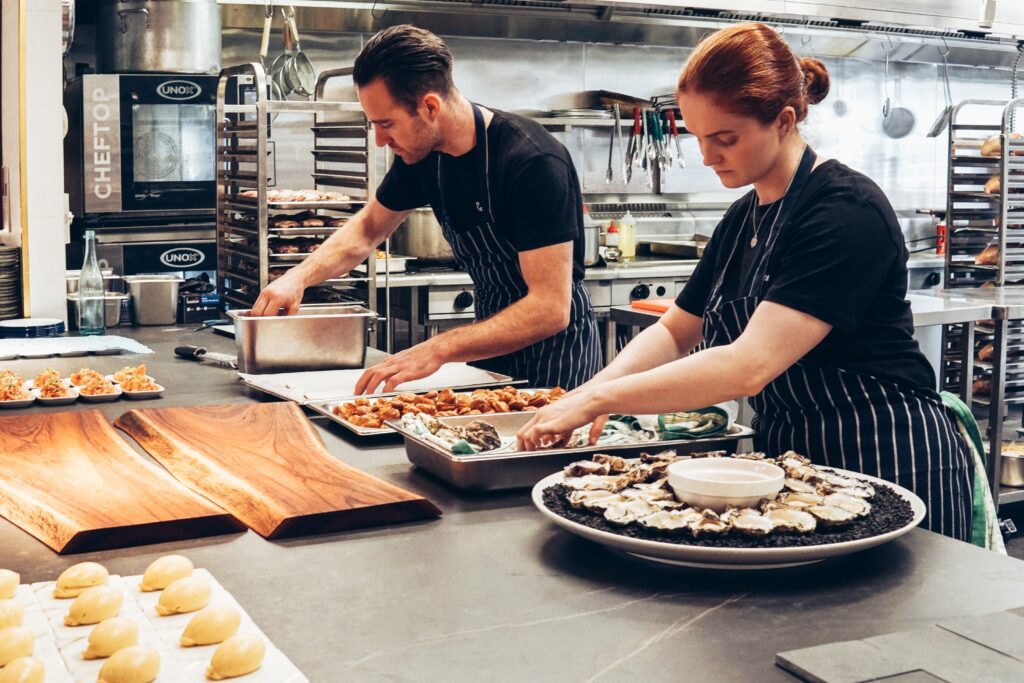Food poisoning is a common, sometimes serious and life-threatening problem. People infected with foodborne disease-causing pathogens may be asymptomatic or their complaints may vary from mild intestinal discomfort to severe dehydration, bloody diarrhea, prostration and severe changes in general condition and consciousness.
The World Health Organization (WHO) has published data that are very enlightening regarding the importance of bacteria, viruses and parasites as causative agents of food-borne diseases.
Understand in detail about food poisoning and learn how food is prepared in restaurants.
Let food be thy medicine, and let medicine be thy food.
-Hippocrates
Jump To Section
Food Poisoning
You can also watch this and other exclusive GA Originals on YouTube.
It is a condition that arises after consuming food contaminated by pathogens or microorganisms harmful to our body, such as bacteria, parasites, and viruses.
These pathogens are found in foods such as raw meat, eggs, unpasteurized milk, vegetables, and unfiltered water or during food preparation and storage.
One of the main aspects of spreading these microorganisms in our food may be going unnoticed by chefs or home cooks.
I’m talking about the danger zone, where microorganisms can multiply at temperatures between 4°C and 60°C. Food left in this temperature range promotes the proliferation of microorganisms, which will cause food poisoning.
It is essential to say that keeping food out of this danger zone range as long as possible, during all food preparation stages, service, and sale, is the safest way to prevent foodborne illnesses and outbreaks.
Imagine that after vegetables, milk, or meats, after being processed, they go through packaging, shipping, receiving, and preparation to be finally consumed. The food temperature control at all these stages must be strictly monitored.
How Food Is Prepared In Restaurants?

In restaurants, most foods are reheated for serving. Or do you still believe they make all food on the fly, just for you?
When food is kept below 4°C, microorganisms have their proliferation rate reduced. When the food is in the freezer, below -18°C, the pathogens are inactive, as if they were frozen. Consequently, the lower the temperature, the slower the activity of bacteria will occur.
At temperatures above 60°C, there is also a reduction in microorganisms’ multiplication rate. But, they are eliminated when the food reaches 70°C.
- Always use a calibrated digital thermometer and insert the thermometer probe into the thickest part or center of the food for at least 15 seconds to take the reading.
- In restaurants, cold preparations, such as salads, desserts, and Japanese foods, must be held to a temperature equal to or less than 4ºC for a maximum of two hours.
- Hot preparations must be maintained at a temperature above 60ºC for six hours.
- NEVER thaw food at room temperature. As the food melts outside, it will reach the danger zone, allowing bacteria to multiply quickly.
- Thaw in cold running water by placing the food in a container deep enough to water, also at 4°C, covering all the food while water is circulating.
- Defrost food in small portions directly in the pan as part of the continuous cooking process.
- Despite being a quick method, defrosting large items in the microwave is not effective.
- Defrosting food in the fridge is the safest method, despite being slow, and it may take a day or more.
Did you like this article?
I hope this article has helped you improve your skills. To learn more, take a look at Is It Safe To Wash Meat Before Cooking?
Leave a comment below and share our content.
Help our community grow by following our social media on Spotify, Instagram, Facebook, Youtube, and Tiktok. And stay up to date with the news from the world of Gastronomy.
Don’t forget to tag @gastrovinoacademy on Instagram and hashtag it #gastrovinoacademy.
Cheers 🍷


